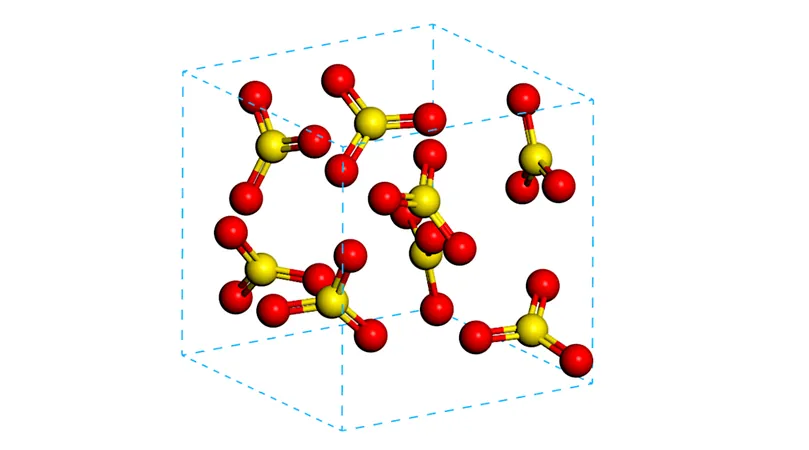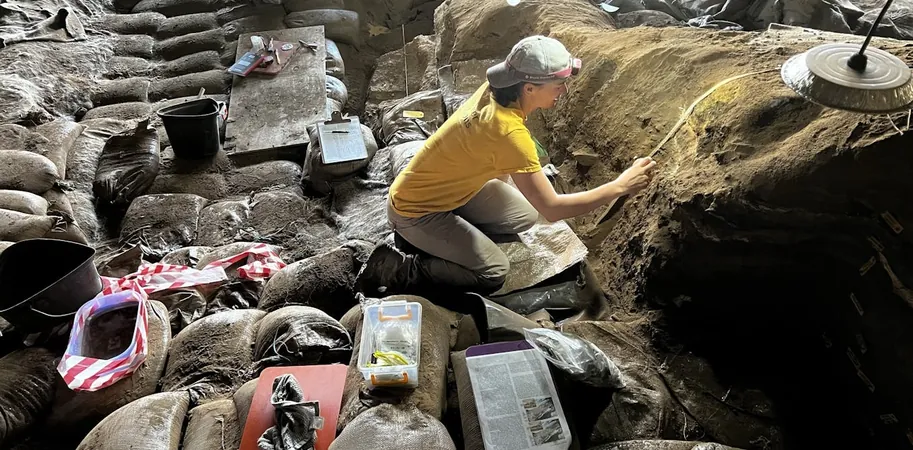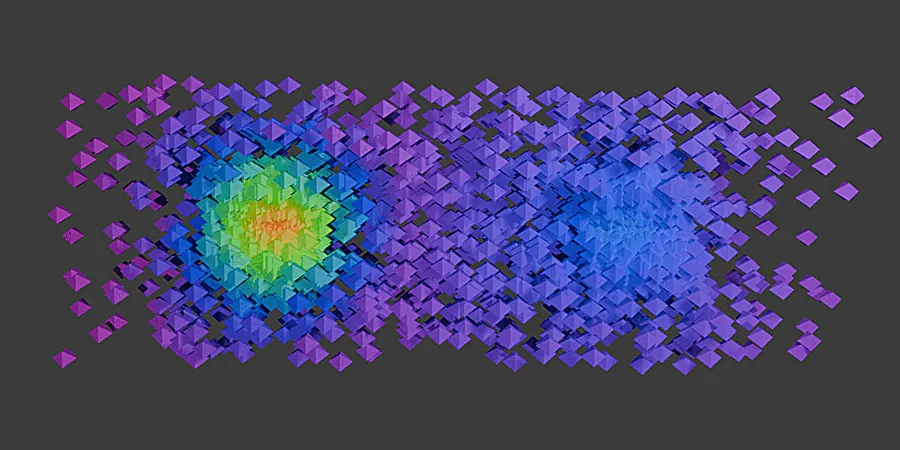
Unlocking the Secrets of Space: How UV Light Triggers SO2 and SO Release in Protoplanetary Envelopes
2025-07-13
Author: Wei Ling
A Cosmic Discovery in Protoplanetary Chemistry
Recent findings reveal astonishing high concentrations of sulfur dioxide (SO2) and sulfur monoxide (SO) in the frigid surroundings of an intermediate mass protostar. This intriguing phenomenon suggests that these essential compounds likely originate from icy dust grains, later escaping into the gas phase through a process known as photodesorption.
Unraveling Photodesorption Yields of SO2 and SO
In a landmark study, researchers have quantified the photodesorption yields of SO2 and, tentatively, SO when subjected to ultraviolet (UV) light. By analyzing SO2 ice samples at chilling temperatures ranging from 14 to 80 Kelvin, they measured the quantities released into the gas phase using a sophisticated calibrated quadrupole mass spectrometer.
The results unveiled yields of approximately 2.3 x 10⁻⁴ molecules per photon for SO2 and 6 x 10⁻⁵ for SO at the icy temperature of 14 K. As temperatures climbed, the SO2 photodesorption yield peaked at 3.8 x 10⁻⁴ molecules per photon at 70 K, before tapering off at 80 K, an intriguing decline likely attributed to crystallization within the sample.
SO’s Steady Signal: Consistent Photodesorption Yields
Notably, the photodesorption yield for SO remained remarkably stable regardless of temperature fluctuations, indicating a steady release, which could play a crucial role in the chemical dynamics within protoplanetary disks.
Bridging Observations with Theoretical Models
To further analyze these findings, scientists integrated the estimated photodesorption yields into the Nautilus gas-grain chemical model, shedding light on how SO2 and SO gas-phase abundances might evolve in astrophysical environments.
Understanding SO3’s Role in Interstellar Ice
In addition, the research introduces a theoretical estimation for the band strength of the 1395 cm⁻¹ SO3 infrared feature, quantified at A = 1.1 x 10⁻¹⁶ cm molecules⁻¹. SO3 emerges as a key product formed during the irradiation of SO2 ices, potentially influencing the 7.2 µm band observed in certain interstellar ice infrared spectra.
Groundbreaking Insights from Space Science
This groundbreaking research, led by an accomplished team including Rafael Martín-Doménech and Bruno Escribano, advances our understanding of the complex chemical processes in space, unveiling the intricate dance of molecules that could be critical in the formation of new celestial bodies.



 Brasil (PT)
Brasil (PT)
 Canada (EN)
Canada (EN)
 Chile (ES)
Chile (ES)
 Česko (CS)
Česko (CS)
 대한민국 (KO)
대한민국 (KO)
 España (ES)
España (ES)
 France (FR)
France (FR)
 Hong Kong (EN)
Hong Kong (EN)
 Italia (IT)
Italia (IT)
 日本 (JA)
日本 (JA)
 Magyarország (HU)
Magyarország (HU)
 Norge (NO)
Norge (NO)
 Polska (PL)
Polska (PL)
 Schweiz (DE)
Schweiz (DE)
 Singapore (EN)
Singapore (EN)
 Sverige (SV)
Sverige (SV)
 Suomi (FI)
Suomi (FI)
 Türkiye (TR)
Türkiye (TR)
 الإمارات العربية المتحدة (AR)
الإمارات العربية المتحدة (AR)